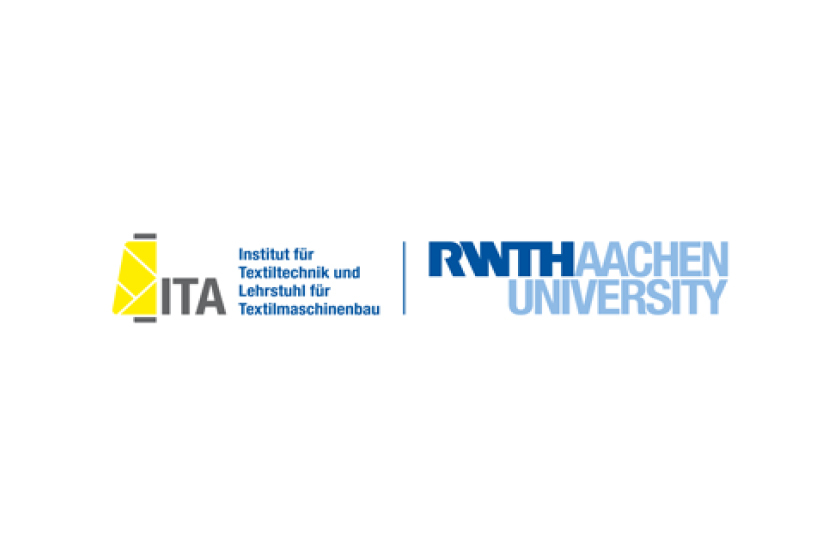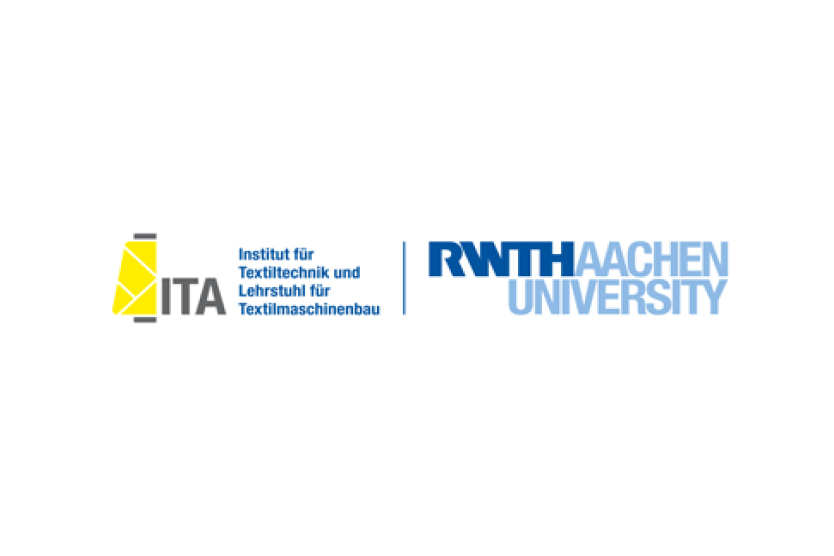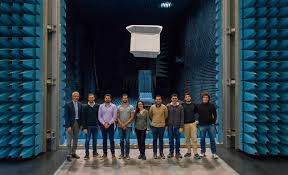Institut für Hochfrequenztechnik und Radarsysteme
 22
22
 2020-12-24 17:00:04
2020-12-24 17:00:04
Company address
Location:
Almanya, Munich , Münchener Str. 20, 82234 Weßling, Germany
Service types
About company
The Institute for High Frequency Technology and Radar Systems uses its know-how and overall system expertise on passive and active microwaves to develop innovative sensors, algorithms and applications for ground, aircraft and satellite-based remote sensing.
December 22nd, 2020
Our this year's poinsettia ( Download [11 MB]) comes from Italy and was observed by the TanDEM-X satellite mission. The municipality of Palmanova, a UNESCO World Heritage Site, is located in the Veneto region. It was laid out at the end of the 16th century as a fortified city of the Republic of Venice and, with its star-shaped floor plan, followed the concept of the Renaissance urban planners for an ideal city. In this TanDEM-X image, the height of the surface is shown in color (dark blue is 12 m and red is 38 m above mean sea level). The brightness is proportional to the intensity of the radar backscatter. TanDEM-X was started in 2010 and has been working since then together with its twin TerraSAR-X as a bistatic SAR interferometer. This year we are celebrating 10 years of TanDEM-X operation in close formation flight. TanDEM-X's global digital elevation model (DEM) has been available for commercial and scientific applications since 2016. A new edition of this global data set, called Change DEM, will be available soon.
Keep an eye out for news from TanDEM-X at www.dlr.de/HR .
The Institute for High Frequency Technology and Radar Systems wishes you a Merry Christmas 2020 and, above all, a healthy, successful year 2021!
Glacier retreat in the Alps - documented across the board for the first time
July 8th, 2020
A research team from Friedrich-Alexander-Universität Erlangen-Nürnberg (FAU) examined the changes in area and height of all glaciers in the European Alps over a period of 14 years. To do this, they compared three-dimensional terrain models of the German radar satellite mission TanDEM-X and the German-American shuttle radar topography mission (SRTM) from the period between 2000 and 2014. The team combined the elevation models with optical images from NASA's Landsat satellites. The result: Around 17 percent of the total ice volume in the Alps has been lost since the turn of the millennium. The team recently published their findings in the journal Nature Communications.
Congratulations, TanDEM-X! 10 years of 3D mapping from space
June 25, 2020
Ten years ago, on June 21, 2010, a new era in radar remote sensing began: The TanDEM-X radar satellite was launched. Since then he has been circling the earth in close formation flight with his three years older "twin brother" TerraSAR-X. The distance between the satellites varies between several kilometers and at times only 120 meters. This enables the radar sensors to have a 3D view of the earth. Physically correct, one speaks of a bistatic interferometer in space, which allows the structure of the terrain to be recorded three-dimensionally with just one overflight - a space mission that is so far unique in the world.
DLR manufactures medical auxiliary equipment for the Fürstenfeldbruck Clinic
June 9th, 2020
Since the beginning of the Corona crisis, the 3D printers of the German Aerospace Center (DLR) have been doing their services outside of aerospace research. The specialists from Systemhaus Technik successfully retrofitted the systems and were thus able to deliver the first medical auxiliary equipment. The Institute for High Frequency Technology and Radar Systems at the Oberpfaffenhofen location was also involved.
50 years of "Earth Day" - satellites observe dramatic changes on our earth
April 21, 2020
Millions of people took to the streets in the United States on April 22, 1970 - 50 years ago today - to demonstrate against oil spills, environmental pollution, whaling and toxic waste - and they founded an initiative that soon spread across the globe should capture: The environmental movement, of which today's "Earth Day" is reminiscent, has shaped our civilization - in many cases with significant findings from space. In Corona times, the motto here is also #EarthDayAtHome - this hashtag contains examples of actions and information that we can do from home to raise our awareness of the vulnerability and uniqueness of our blue planet.
Since the launch of the first German research satellite AZUR in November 1969, Germany has become one of the world's most important partners for peaceful exploration of the earth from space. The German Aerospace Center (DLR) played and continues to play a key role with its own missions such as the German twin pair of radar satellites TerraSAR-X and TanDEM-X and, from 2021, the EnMAP mission as well as German contributions to ESA earth observation satellites such as the first European weather satellite Meteosat in the 1970s, followed by ERS and Envisat up to the current European satellite network of the Copernicus program.
Earth observation with radar interferometry: the development of Patagonian ice fields shows the enormous complexity of the physical interactions
December 10, 2019
Since the Little Ice Age between 1250 and 1900, the glaciers and ice fields in the South American region of Patagonia have been on the decline. In the past few decades, the loss of ice sheets related to tropospheric warming has accelerated. From 2000 to 2016, the Patagonian ice fields contributed around six percent to the eustatic sea level rise of 0.74 millimeters per year.
Brazilian delegation visits DLR
December 04, 2019
Brazil and Germany can look back on a successful cooperation that has existed for almost five decades. The focus of scientific and technological cooperation (WTZ) has been activities in the fields of space travel and aeronautics since 1969, accompanied by projects in materials technology as well as energy and transport technology.
UN Climate Change Conference: Monitoring the Earth - DLR presents the Tandem-L satellite mission
December 03, 2019
This year's United Nations World Climate Conference (COP25) will take place in Madrid from December 2 to 13, 2019. As part of the "Earth Information Day 2019", the German Aerospace Center (DLR) presented Tandem-L, the proposal for a new type of satellite mission to monitor the earth, on the second day of the climate summit. With the help of Tandem-L, the effects of climate change could be monitored in the future and, at the same time, the effectiveness of political measures to curb climate change controlled. A total of two radar satellites will record changes in the earth on a weekly basis - with high resolution and regardless of the weather or time of day.
10 years of microwave research in the "TechLab"
The research work of the Institute for High Frequency Technology and Radar Systems in the German Aerospace Center (DLR) looks back on decades of experience. At the Oberpfaffenhofen site, the properties of antennas and their functionality were investigated as early as the 1930s. Since that time, measuring methods and techniques have been continuously developed. In 2009, with the construction of the "TechLab", a state-of-the-art research environment was created that continues to meet future research demands to this day. The institute thus expanded its unique infrastructure for the development of innovative earth observation missions such as the current proposal for the Tandem-L radar satellite mission.
German radar satellites provide valuable environmental data
October 24, 2019
Today it is no longer a secret that our environment has changed more rapidly since the beginning of industrialization than before. The German satellite missions TerraSAR-X and TanDEM-X have been delivering unique earth observation data since 2007 and 2010, from which extensive knowledge about our environment can be obtained. Scientific users from all over the world have come together at the German Aerospace Center (DLR) in Oberpfaffenhofen to exchange the results obtained from the data and to set requirements for future remote sensing technologies as part of the “TerraSAR-X and TanDEM-X Science Meetings” formulate. The latest research will be revealed in more than 100 presentations from October 21 to 24, 2019. Accompanying this, the TanDEM-X blog presents lectures from the "Science Meeting" and outlines
25th anniversary of the SIR-C / X-SAR space shuttle missions - two DLR experts remember
October 07, 2019
Earth observers like to "look" at the earth with radar devices. They allow highly accurate images of the surface and have a major advantage over optical cameras: recordings are not only possible with the best visibility, but also when it is cloudy, rainy or at night. Research on space-based radar technologies looks back on a long history. The SIR-C / X-SAR multifrequency radar system was a milestone. Twenty-five years ago, it flew twice around Earth on the Space Shuttle Endeavor, in April and October 1994. It was the most advanced civilian radar in earth orbit to date - and as big a step for earth observation as the transition from black and white to color film in photography.





































 İlan ver
İlan ver 













